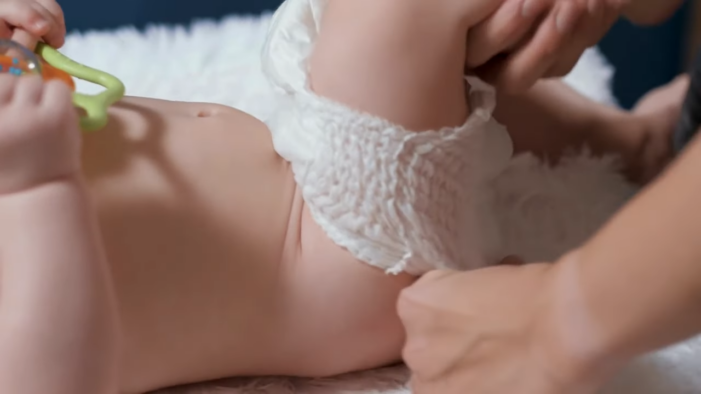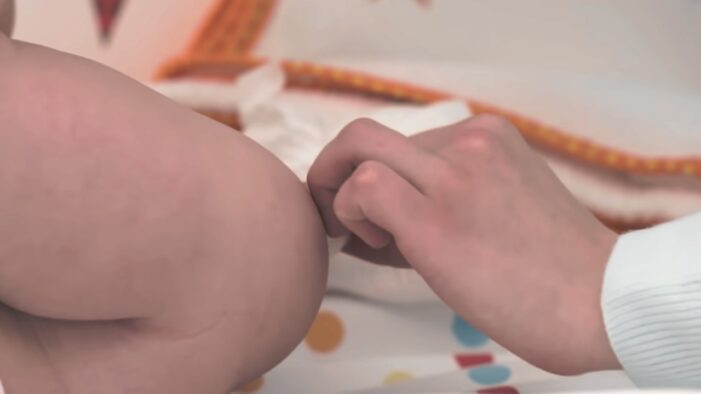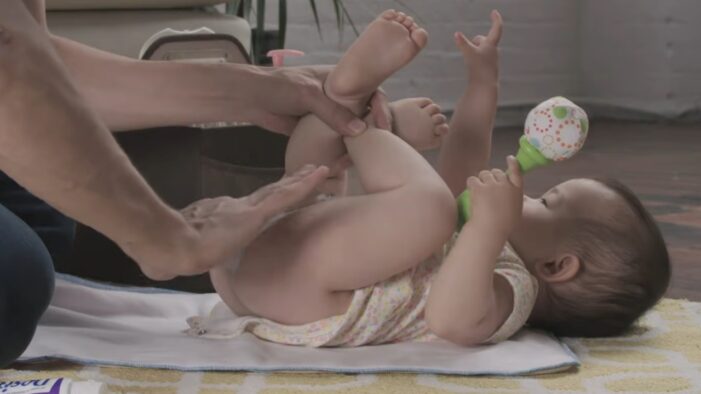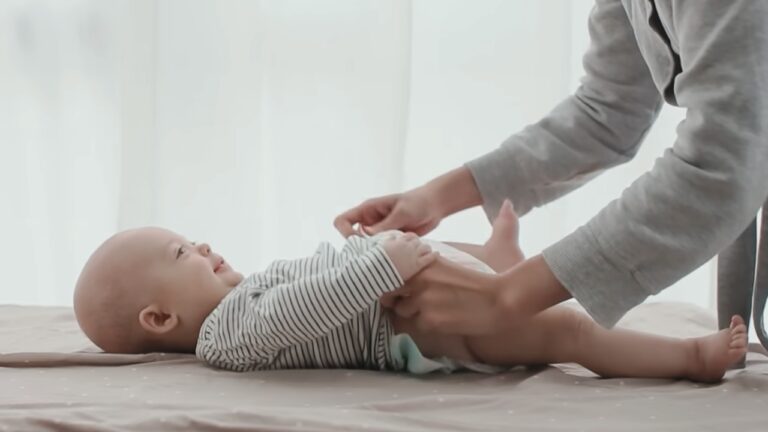To prevent diaper rash, keep your baby’s diaper area clean and dry.
Change diapers regularly and clean the area properly to reduce irritation.
Let your baby have some diaper-free time each day to allow the skin to breathe and reduce moisture buildup.
Frequent Diaper Changes

Wet or soiled diapers left on too long can cause skin irritation and lead to diaper rash.
Ideally, diapers should be checked every 2 to 3 hours and changed immediately if they are wet or dirty to minimize moisture exposure.
During nighttime, it may be necessary to change diapers at least once to prevent prolonged contact with wetness.
Proper Diaper Fit
Diapers that are too tight can cause chafing and rubbing, leading to skin irritation.
On the other hand, too loose a diaper may result in leaks, increasing the risk of a rash.
Always look for diapers that offer a snug but comfortable fit around the waist and legs without leaving marks on your baby’s skin.
Gentle Cleaning Techniques

Use mild, alcohol-free, and fragrance-free wipes or a soft washcloth with warm water.
Pay attention to cleaning between skin folds to prevent irritation.
Avoid scrubbing the skin; instead, pat it dry gently. Additionally, letting your baby spend some time without a diaper on a waterproof mat can help keep their skin dry and reduce the risk of rashes.
For added protection, applying a barrier cream like petroleum jelly can create a moisture-resistant layer on the skin.
Using Barrier Creams
Parents can use creams containing zinc oxide, a common ingredient that offers a protective layer. This ingredient is great for its skin-healing properties and creates a barrier against irritants.
Desitin and Aveeno are popular choices among parents for this reason. Apply a generous layer during each diaper change, especially if the baby is prone to rashes. These creams provide not only a barrier but also soothe any existing irritation.
Another option is using products free from alcohol and other chemicals that could potentially irritate the skin.
Alternative Barrier Methods

Using petroleum jelly is another effective way to prevent diaper rash. It is often recommended for its simplicity and effectiveness in creating a moisture barrier.
Just like cream, apply it during each diaper change. Petroleum jelly is widely recommended for its ease of application and protective properties.
Moreover, let your baby spend time without a diaper to let the skin air-dry. This strategy helps keep the diaper area dry and allows the skin to breathe, reducing the likelihood of rash. Placing the baby on a waterproof mat or rubber sheet can help in this practice.
Diaper Selection

Types of Diapers
Diapers generally come in two main varieties: disposable and cloth.
Disposable diapers, like Pampers Swaddlers and Cruisers, are known for their convenience and high absorbency. Brands often incorporate features like moisture-wicking layers and elastic leg cuffs to prevent leaks. These diapers are easily accessible and typically require less effort in cleaning.
On the other hand, cloth diapers are reusable and often considered more environmentally friendly. Modern cloth diapers come with options like snap closures, adjustable fittings, and multiple layers of absorbent material. Parents can choose cloth diapers for their cost-effectiveness over time and reduced waste.
Materials and Absorbency
The materials used in a diaper directly affect its performance and comfort. Disposable diapers often include materials like superabsorbent polymers and polyethylene film, which keep moisture away from the baby’s skin. The inner layers are usually made from nonwoven fabrics to ensure softness.
Cloth diapers are made from natural fibers such as cotton, bamboo, or microfiber. These materials are breathable and can be less irritating to sensitive skin. Some cloth diapers come with additional inserts for enhanced absorbency, such as charcoal bamboo or hemp.
Materials like superabsorbent polymers in disposable diapers offer high absorbency levels. For cloth diapers, inserts and liners can significantly improve their moisture-wicking capabilities.

